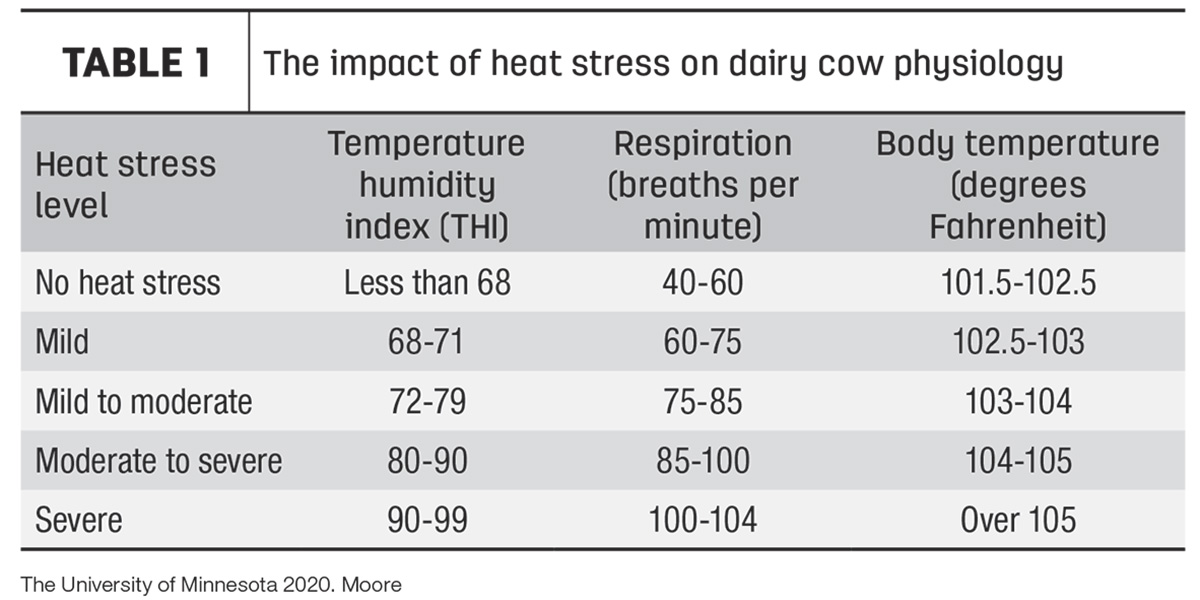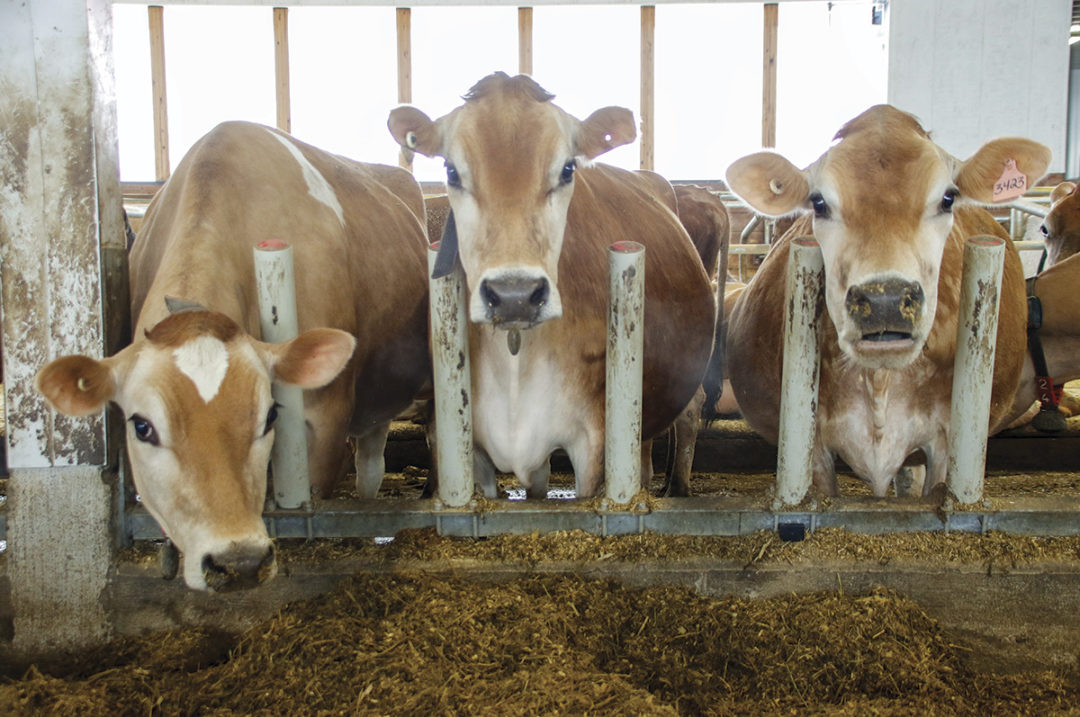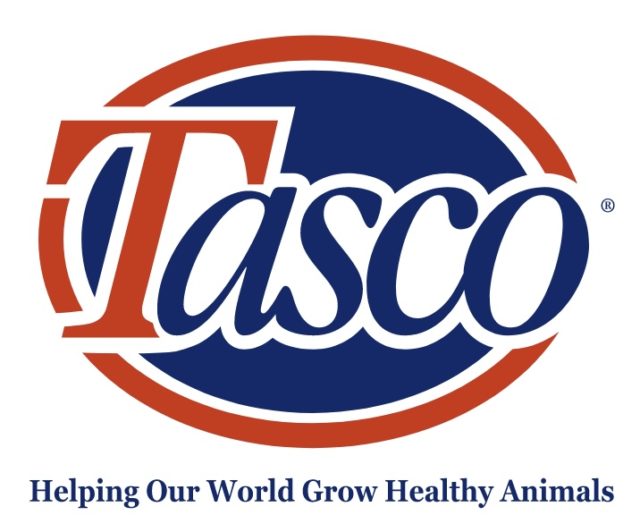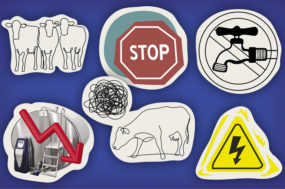Animals generate heat when consuming feed, producing milk or through solar absorption when exposed to the sun. Animals can become heat stressed when the amount of heat generated or absorbed surpasses the amount of heat dissipated through sweating, respiration or air movement (wind or fans).
Visible signs of heat stress include increased respiration, sweating, panting, restlessness, increased standing time, crowding near water troughs, decreased overall activity, reduced feeding time and reduced milk production. Table 1 shows the different heat stress levels and their impact on the physiology of dairy cows.

Furthermore, ruminants can suffer a variety of consequences related to heat stress including reduced reproductive performance and immune function and even an increase in cull/death rates.
Heat stress not only majorly impacts animal welfare and health but can be economically costly for farmers. Research from the University of Florida found that heat stress cost the U.S. dairy industry $1.5 billion in 2021 from losses in production, reproductive performance and increases in morbidity and mortality rates. Additionally, Lactanet estimates milk production losses of $42.4 million annually across Canada due to heat stress, before accounting for reproductive and health costs.
Therefore, heat stress is a major issue impacting the dairy industry and many other production animals as well. So how do we prevent it? While we can’t control the climate and weather, there are some strategies we can implement to give our animals the best shot at surviving and even thriving in hotter conditions.
Nutritional and feeding strategies
While this may seem like an irrelevant strategy given that we know dry matter intake (DMI) drops when animals are faced with heat stress, it is still very important to consider the quality of feed cows are being offered, the potential need for additional supplements in the hot summer months and, of course, water intake.
Diet formulation should account for decreases in feed intake by proportionally increasing energy and nutrient density. Feeding high-quality feeds that are palatable and nutrient dense will encourage DMI while generating less heat during digestion. However, dietary protein levels should be monitored, as excess protein utilizes energy and generates heat.
One way to ensure a palatable, energy-dense and protein-efficient diet is being fed to heat-stressed animals is to supplement a liquid sugar into the ration. Research done by the University of Guelph has shown many positive benefits for sugar supplementation, including increased DMI, improved metabolic health and reduced feed-sorting behaviours in dairy cows. Additionally, sugar supplementation can optimize milk urea nitrogen (MUN) levels by increasing microbial protein yields in the rumen, reducing protein feed waste and nitrogen excretion into the environment.
Another important factor to consider during times of heat stress is feed management. Feeding cows multiple times per day or increasing the number of feedings can help stimulate cows to eat. Similarly, frequent feed push-ups can also aid in increased feeding time and encourage DMI. Regularly clean the feedbunk by removing leftover feed each night to reduce mold from occurring during the hot days and to improve the overall palatability of the diet.
Lastly, unlimited clean water should always be accessible to animals. Ensure all animals have equal access to water and that water is provided in a shaded environment to keep it cool.
These nutritional strategies will give your animals the best chance at beating the heat.
Housing conditions: Shade, cooling systems and ventilation
Shade is one of the most important housing conditions to avoid heat stress. Shade reduces the amount of solar heat absorbed by animals and enhances the efficacy of other cooling systems, such as sprinklers or fans. By keeping the ground cool, shaded areas also provide an opportunity for animals to lose body heat when laying down on cool sand, bedding or pasture. However, simply having shade available to animals may not be enough. Research from the University of Minnesota recommends allowing 4 square metres of shade per animal to avoid overcrowding in shaded areas. Overcrowding increases heat absorption from surrounding body heat and limits the animal’s ability to effectively cool off. Having multiple shaded areas and ensuring enough shade is available to all animals can drastically reduce heat stress on farms.
Furthermore, water cooling systems such as sprinklers or misters that use heat energy to evaporate water are another housing condition that can be used to combat heat stress. Sprinklers are effective at cooling animals only when used in on/off intervals. Sprinklers need to wet the animal and then allow them time to dry using evaporation of body heat to properly cool the animal. Misters need to provide a constant spray of small water droplets to be effective. Misters work by utilizing heat energy from the surrounding air to evaporate the small water droplets before landing, cooling the air and the animals below. Misting systems work best in dry climates with low humidity, as too much moisture in the air can lead to an increase in negative health outcomes such as pneumonia, mastitis or lameness.
Lastly, ventilation is key in mitigating the effects of heat stress as well as ensuring good air quality. Ensuring your farm is properly ventilated is essential to reduce heat stress and promote overall animal health. Whether your farm uses natural, tunnel or cross-current ventilation systems, ensuring cool air flows evenly throughout the barn is crucial for limiting overcrowding in “cooler” areas and promoting animal comfort.
Fan placement and number of fans is key. Avoid directing hot air down from barn roofs onto animals, and place fans strategically to draw in cool air and disperse it among the animals. Research from the University of Kentucky recommends placing fans no more than 10 times their blade diameter apart to successfully ventilate and cool a given space. For example, 4-foot fans should be placed no more than 40 feet apart.
Conclusions
Heat stress is a prevalent, costly issue faced across North America. While all the factors described are effective at reducing heat stress, we acknowledge that changes to farm design/cooling systems are not always economically viable. Fast, affordable changes such as increasing diet palpability, number of feed push-ups or fresh feed delivery, adding or replacing fans, or even adding individual sprinklers/misters over footbaths or high-trafficked sorted areas are all great places to start.
With climate change growing more unpredictable each year, heat stress is no longer reserved for specific regions or areas. Educating ourselves now on ways to beat the heat will save our animals and our wallets in the long run.
Co-author Ruby D'aoust is a research assistant pursuing an undergraduate degree at the University of British Columbia.









